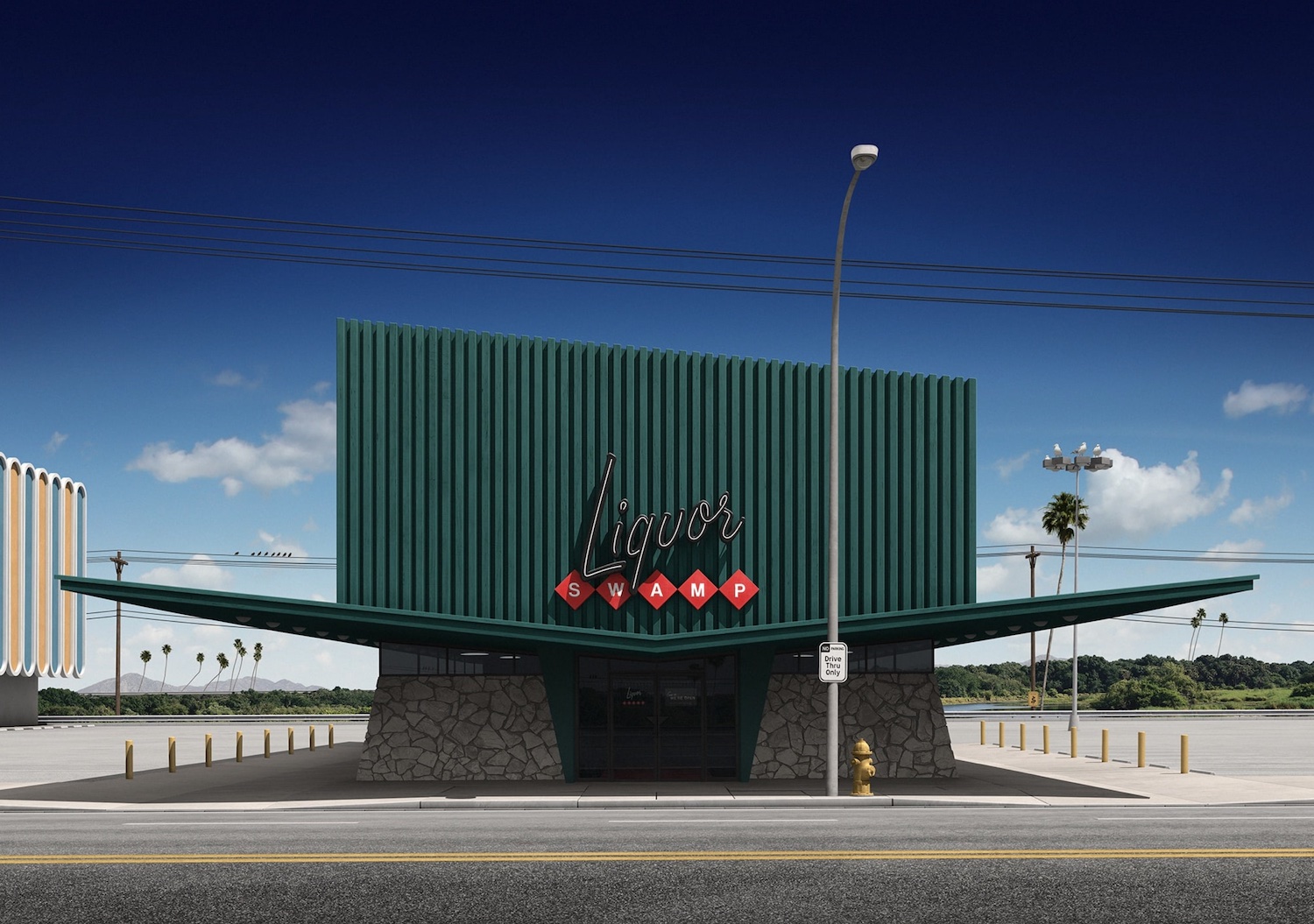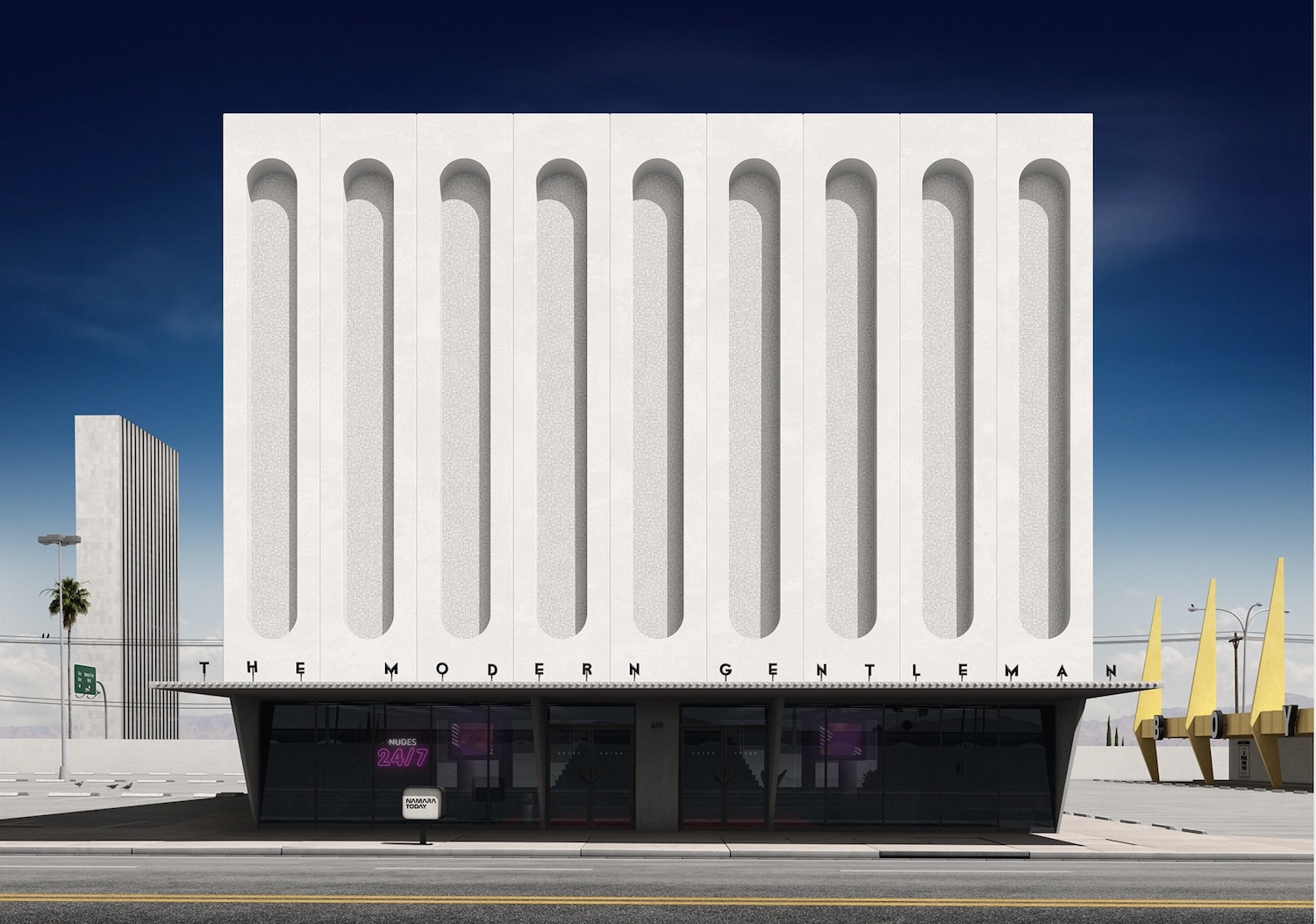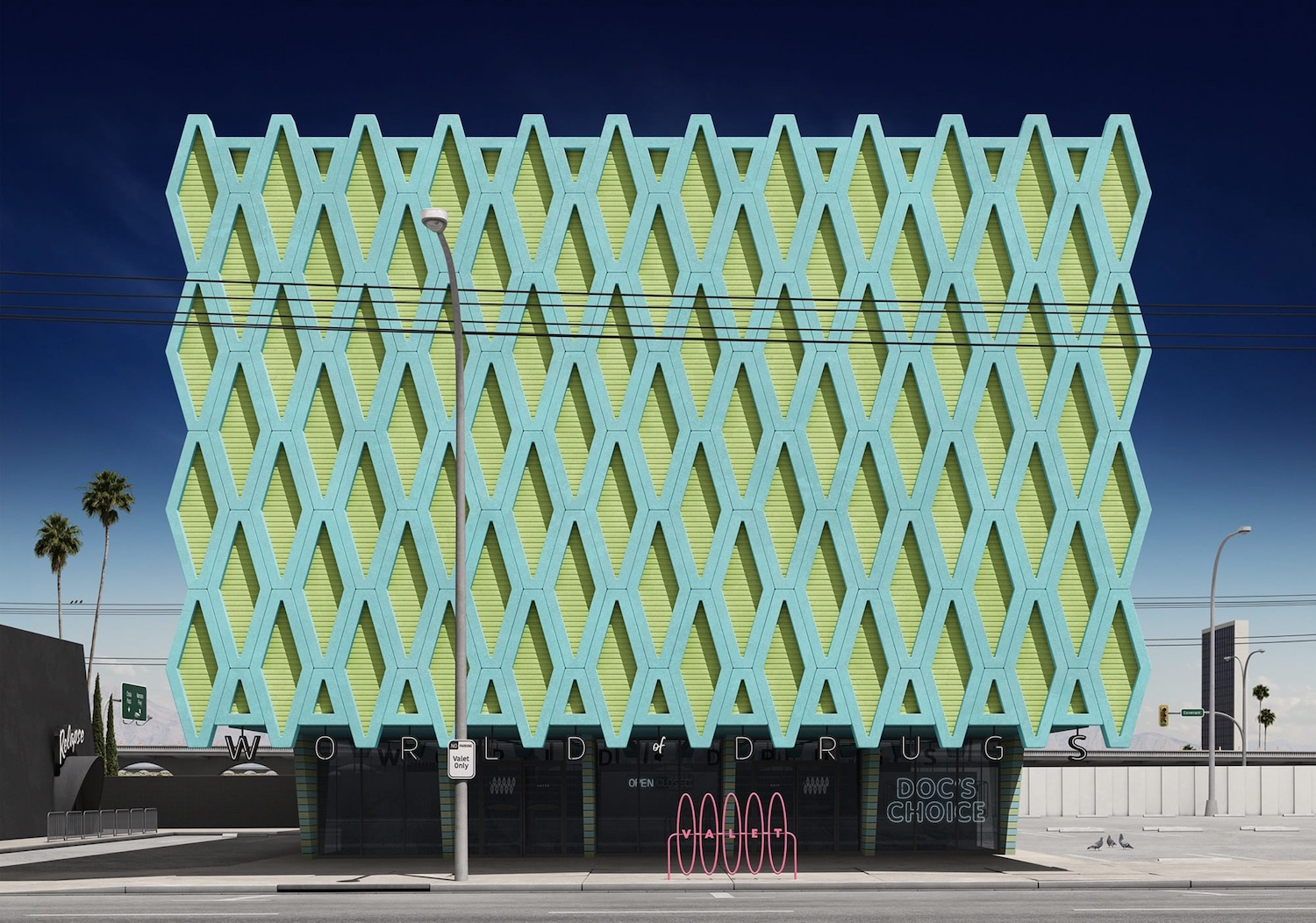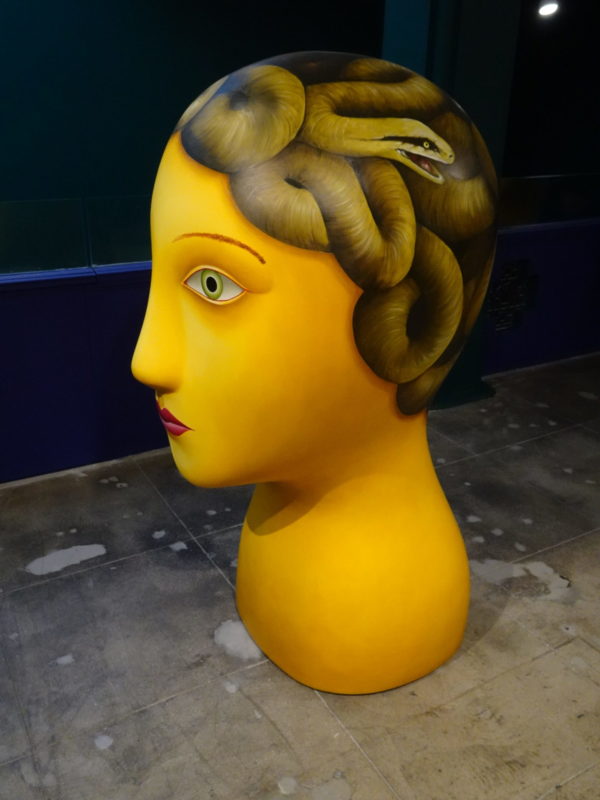Your cart is currently empty!
Tag: LA art exhibitions
-

GALLERY ROUNDS: Robert G. Achtel
Marshall GalleryThe City of Namara is a fictitious place created by Robert G. Achtel. In the photographs that define this curious and digitally fabricated location, Achtel presents Namara as a place devoid of people and filled with modernist architecture. Each building is shot straight-on and fills the frame. These evocative and precisely positioned structures are created by digitally compositing thousands of photographs of buildings, signage and the landscape, as well as fragments of sky and road that Achtel captured during visits to Nevada, Florida and California. Because they are digital composites, however seamless they might be, the works call into question the notion of photographic veracity. While Achtel begins with “real” physical forms, he changes the colors, proportions and relationships between the elements by using software, such as Photoshop, to create a heightened sense of place.
The Gateway (all works 2020) depicts the facade of a liquor store called Liquor Swamp. The scripted letters of the word liquor— white lines surrounded by black— are installed above diamond-shaped plaques with the letters S-W-A-M-P on a striated dark green facade of a midcentury modern building that has a Jetsons essence. Bisecting the building is a tall light pole supporting a sign that states, “No Parking: Drive Thru Only.” However, there is no visible drive-thru. Stone walls depicted in shadow make up the lower portion and are positioned on either side of the glass entrance. The building is set in a vast empty landscape with a few palm trees blowing in an invisible breeze. Telephone wires and the top of light fixtures provide a resting place for groups of birds that may or may not have been in the “original” photographs.

Robert G. Achtel, Jealousy, LightJet chromogenic print, 2020 In Jealousy, Achtel presents a stark white facade with nine tall recessed spaces, each casting slightly different sized shadows consistent with their positions in relation to the sun. The black block letters across the facade of the building announce “The Modern Gentleman” while in the window below, there appears a neon sign stating “Nudes 24/7.” As in The Gateway, the setting is devoid of life (except for occasional birds) and the landscape is a barren strip of road in a desert climate. To the left and just behind the central structure is a tall skyscraper jutting into the sky like a minimalist sculpture. To the right is another Jetsons styled modernist building with spiky yellow supports. At one time, this might have been a carwash or body shop, but in Achtel’s image the sign now reads “B-O-Y.”
Though each building is unique, Achtel’s process becomes a bit formulaic. In most photographs he sets the main structure against a distant landscape with palm trees and birds, as well as other modernist buildings placed at the edges of the image to emphasize a vanishing perspective. The buildings in Achtel’s city have specific functions — be it to entertain or heal— and Achtel reinforces this through the narrative implied by reading across the different fragments of signage. The facade of The Fix is a geometric design featuring bright green and blue interlocking diamond shapes. The patterned facade has nothing to do with the building’s function— it is a “drug” store called “World of Drugs” that advertises it as “Doc’s Choice.” Achtel includes a windowless building in the mid-ground called “Relapse” creating an ironic contrast. Relapse, replace, revive are all words easily associated with Achtel’s project. Many of the buildings photographed were once dilapidated, abandoned structures from bygone eras that Achtel has resurrected by compositing and then transforming myriad details from the originals.

Robert G. Achtel, The Fix, LightJet chromogenic print, 2020 What is most striking about Achtel’s images is the Bechers-like straight-on presentation of these fabricated facades. Though different, they exist in the same space, set back from the white or yellow striped road surrounded by blue sky. Achtel purposely creates over-determined spaces that are reminders of both past and present. The images allude to a dystopia. Is this dream city heaven or hell? The facades in The City of Namara with their modern enhancements are drawn from the landscape discussed in Learning from Las Vegas and reference 1950s architecture found in both Las Vegas and Miami. Achtel imbues his city with texts that speak to loss, love and dependence, while simultaneously celebrating the visual power of “Modernist” architecture.
Robert G. Achtel
The City of Namara
Marshall Gallery
July 9 – August 20, 2022
-

Nicolas Party
Nicolas Party’s imaginary world contains no wilderness, only bright graphic artifice based loosely on nature and historical art. In his depopulated landscapes such as Trees (all works 2020), tree trunks and branches are smooth cylinders whose leaves fall like confetti from oddly shaped canopies resembling cartoon characters’ coiffures. Lush swipes of pastel confer surface texture upon expanses of flatness. Two paintings titled Sunset portray seascapes with ice floes—or are they skyscapes of clouds? These works appear alongside murals and architectural fixtures in Party’s current show, an immersive installation themed after the Sottobosco painting genre invented by 17th century Dutch artist Otto Marseus van Schrieck. Named for the Italian word for “undergrowth,” sottobosco paintings spotlight flora and fauna that would normally keep to woodland shadows. Sottoboscos are, by their very nature, factitious, portraying groups of botanical and zoological specimens that wouldn’t normally appear side-by-side. Similarly, Party depicts combinations of creatures, plants, and people commingling in improbably synthetic scenarios. The exhibition’s first floor affects an old-fashioned museum interior trimmed in faux marble and wood. Emerald and red-orange murals portray Land-of-Oz-like caverns that dwarf visitors who approach. Nearby, a dimly lit chapel installation, Sottobosco, contains an original 1663 Marseus painting. Upstairs are huge golden-complected head sculptures with masklike miens and scalps adorned with snakes, frogs and flora painted after Marseus. Whenever present, Party’s human subjects preside. In pastel portraits, they try on mushrooms as hats, wear bouquets of roses as garments, and otherwise treat creatures as adornments in which they never seem quite at ease, bringing to mind the precariousness of both man and nature in their delicate state of human-dominated coexistence.
Hauser & Wirth Los Angeles
901 E. 3rd St.
Los Angeles, CA 90013
Show runs through Apr. 12
Temporarily open by appt. only



